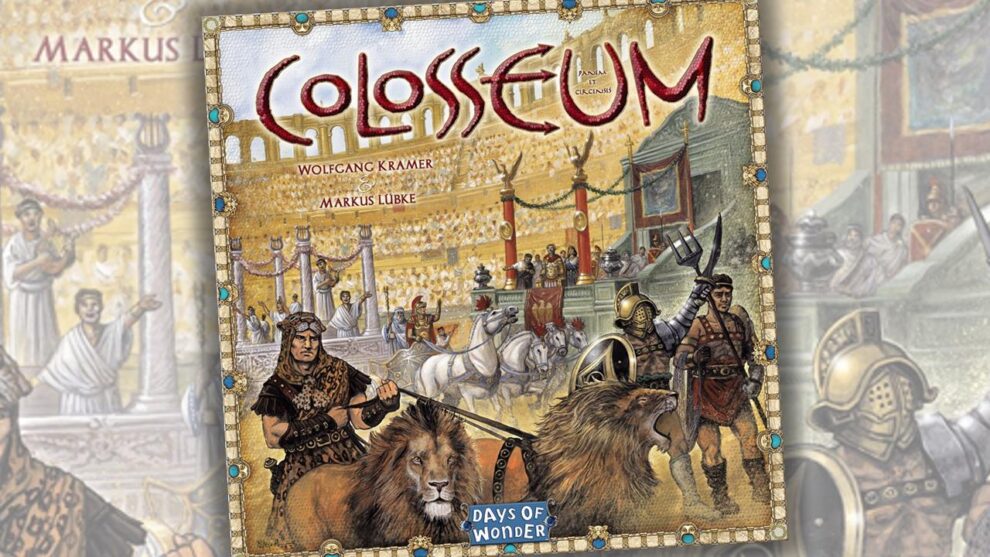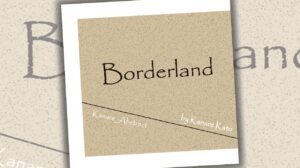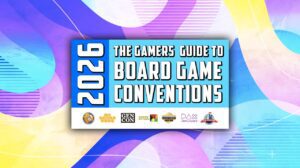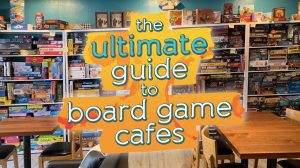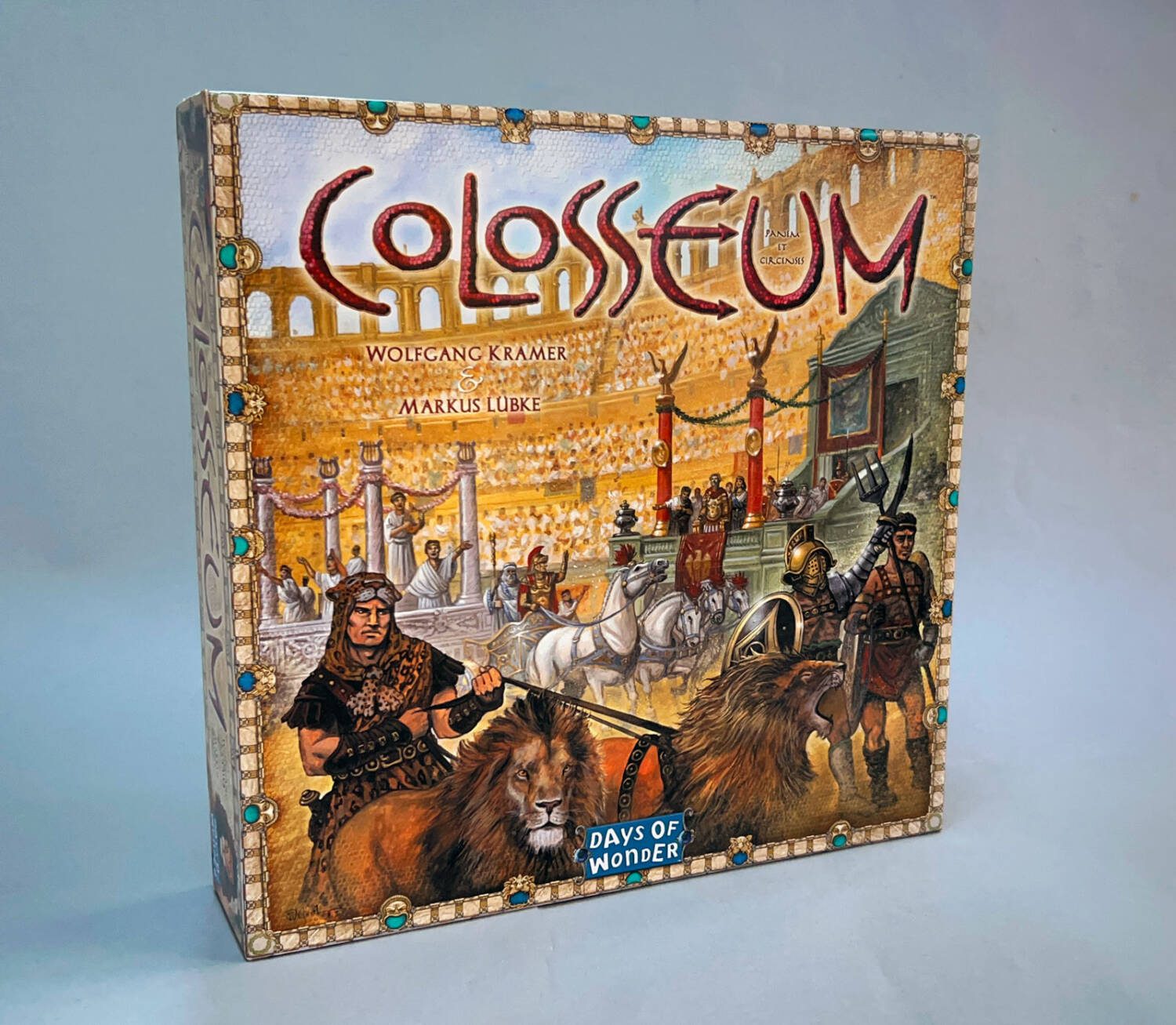
In Colosseum (Days of Wonder, 2007) you compete to put on the biggest events with the biggest actors, the biggest props, on the biggest stages to attract the biggest crowds. These are no simple occasions—these are the blockbuster spectaculars of their days! Poets! Comedians! Gladiators! Chariots! Battle Horses! Man-Eating Lions!
Of course, the more elaborate the performance, the harder they are to produce. However, they will also bring you more money. And should a high-ranking official be in attendance when you stage your Event, that money will only increase. Have the biggest audience during the fifth round of the game and you win.
Let’s get Colosseum to the table, shall we?
Starting the Game
Each player starts with a three-piece Colosseum in their color, 30 coins, a random assortment of starting production tokens, and two unique starting Events.
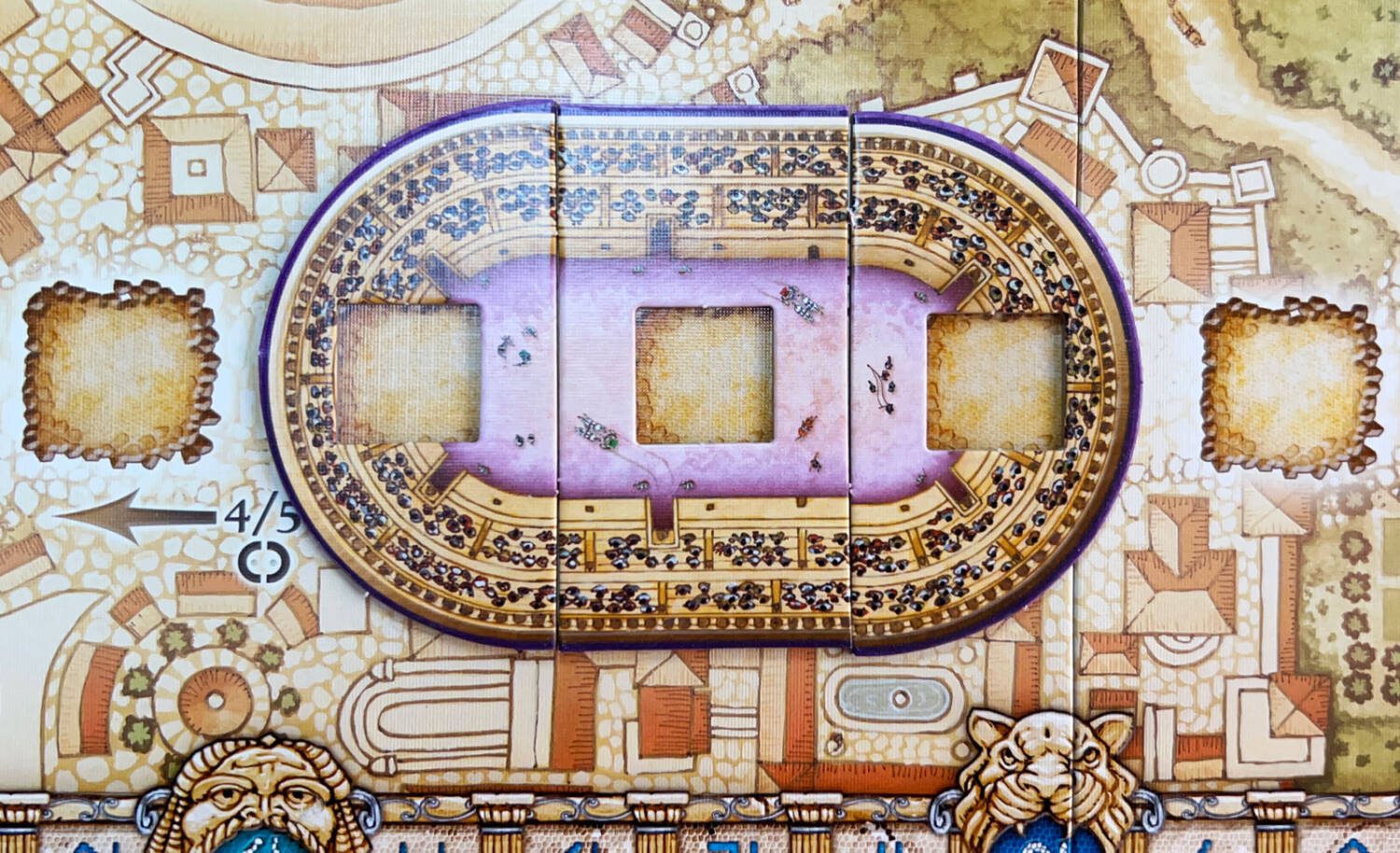
Each Event requires a specific combination of production elements. These can include entertainers, animals, equipment, and/or scenery, as well as a Colosseum large enough to hold the production. The more elaborate the Event, the more money—and points—you’ll score.
In the center of the board, place five groups of three tiles face up in the indicated spaces. These people/animals/props will be available for auction at the start of each of the game’s five rounds. You can only win one auction at the start of each round, and you can only bid if you have money left over after your last production.
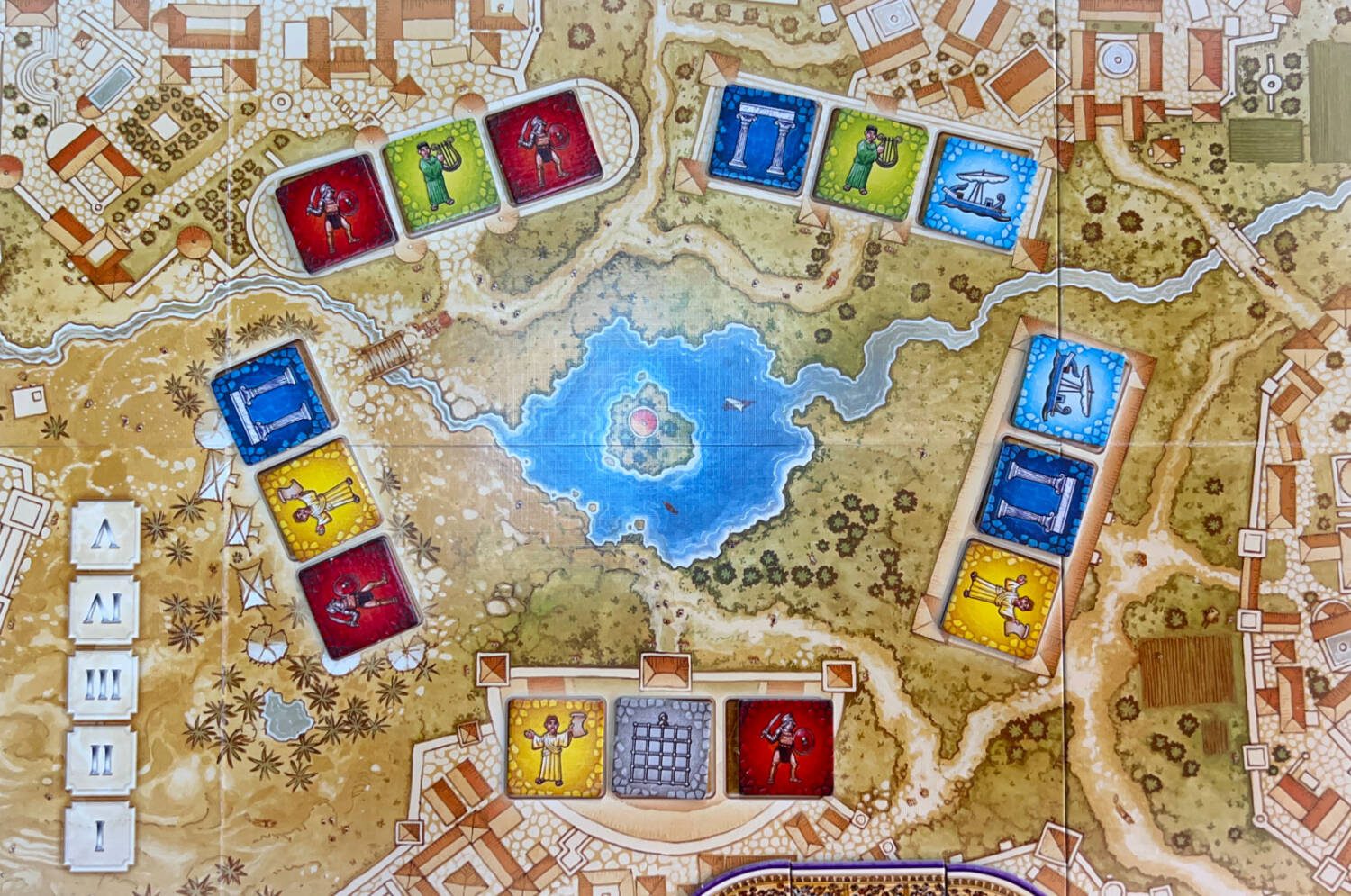
For the first round, you’ll see which of your two starting Events do a better job of lining up with your starting production tokens. Then, when the auction round starts, decide which of the groups you want to bid on to fill in the missing elements from that Event.
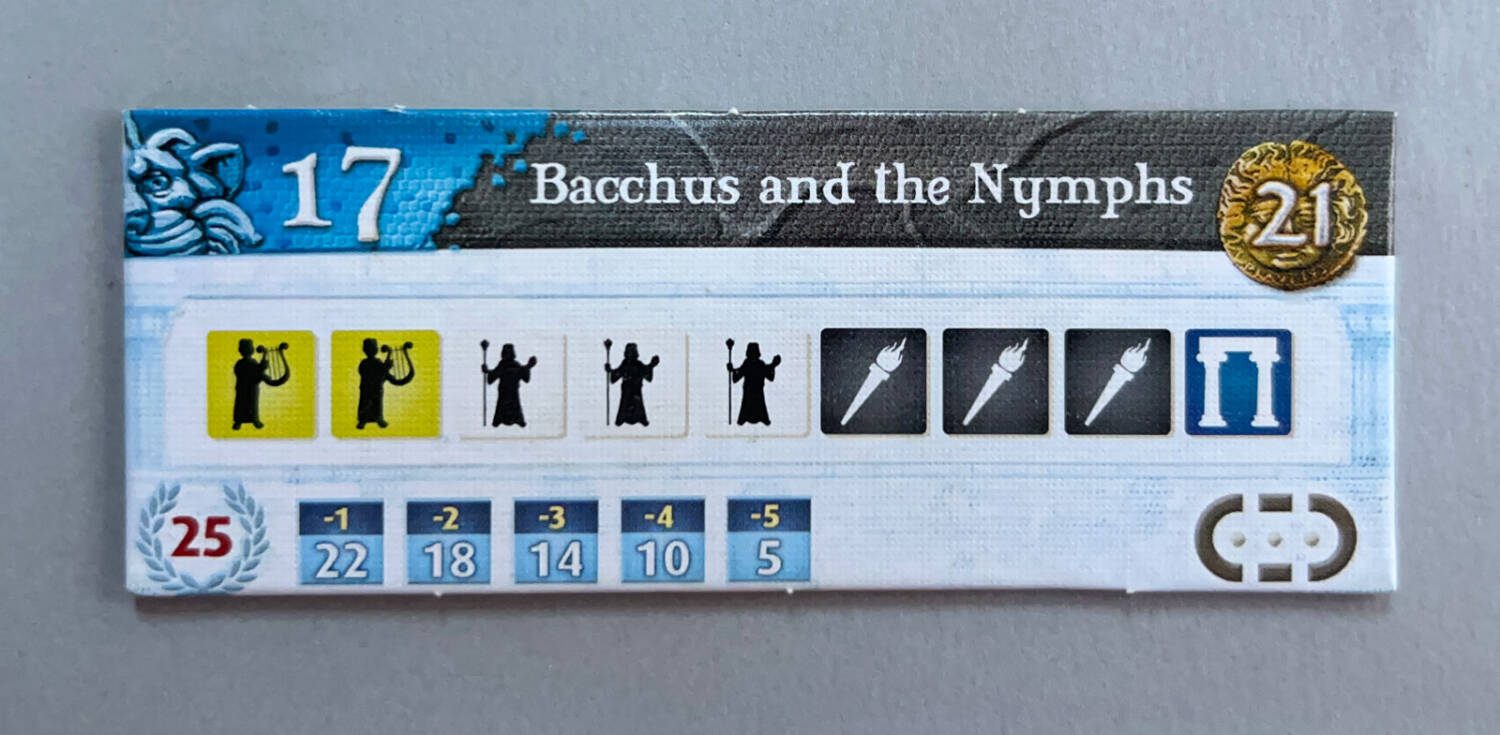
In your first four rounds, you’ll earn coins based on the returns shown at the bottom of your Event. If you have all the production elements, you’ll earn the coins to the far left. For each single element your production lacks, your return decreases. To stay competitive, you’ll need those extra coins to buy bigger and better Events from the market.
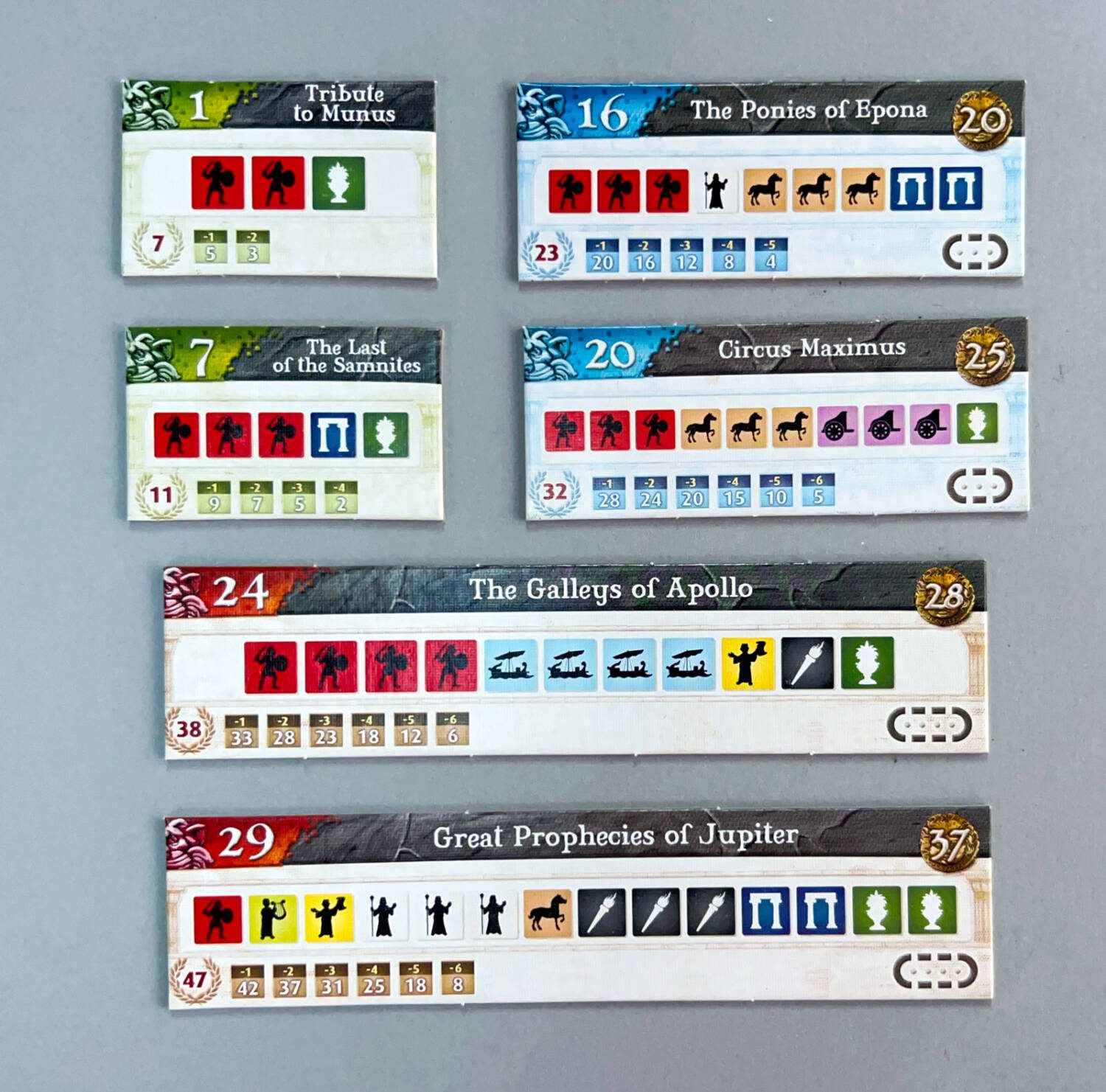
After the auction phase ends, you’ll have a chance to trade production tokens with your opponents. Chances are, they’re missing some elements as well, so in the early rounds, you can be cautiously optimistic about your trading chances.
Continuing the Game
With the exception of the first round, each round will start with the option to invest in an Improvement. There are four Improvements, each of which cost money, but will help you gain additional people in the stands. (Colosseum refers to this as Favor, but it’s just people. And people = money.) One Improvement you’ll be buying more than once is expanding your two-piece colosseum. Your starting colosseum is fine for the game’s opening events, but to put on any of the bigger shows, you’ll need to add a third—and fourth—colosseum expansion. You’ll also need to invest in a bigger event. Bigger events require a bigger colosseum, cost more money, and require more elements—and attracts more people which provides you with a much bigger payout.
You can purchase a Season Ticket that guarantees an extra five people in the stands for each performance. You could also buy an Emperor’s Loge, an item that permits you to roll two dice instead of one when it comes to moving the honored guests around the board. (More on this soon.)
If you ever have three or more gladiators, priests, comedians, musicians, lions, ships or horses, you get the Star Performer token for that cast member. These add +4 spectators each to your Events. However, if someone has more of that token, they’ll steal the Star Performer away from you. You can have as many Star Performers as you have the tokens to claim.
Producing an Event
Once the trading phase ends, it’s almost showtime! However, before your Event starts, you’d really like to get at least one of the dignitaries on the board into your colosseum to witness it. The crowds love these VIPs and their very presence will increase the size of your audience as they all clamor to be noticed by these notable luminaries.
There are three types of celebrities: there is the emperor himself (+7 spectators), 2 consuls (+5 spectators) and 3 senators (+3 spectators). They start the game spread out on the circular track around the board that also contains each players’ colosseum. You’ll roll a single die (or two if you’ve bought an Emperor’s Loge) and can move any of these big shots clockwise along the track that you’d like. Your goal is to either get one into your colosseum or move one away from your opponent’s colosseum.
Alternatively, you could move a noble to one of their resting spots on the board. Doing so will earn you an Emperor’s Medal. These can be used to either: move a noble 1-3 extra spaces clockwise or counter-clockwise, add 3 spectators to your performance, or get you six coins. All three will be useful throughout the game, so spend them wisely.
When you produce an Event, you announce the name of the show, then place all your tokens being used for the show. The bottom of the Event card will show you how many people have attended your performance and, therefore, how much money your show has given you.
After your show, you must return one of the production element tiles used in your production back to the pool of tiles. This is a clever (and annoying) rule that makes for difficult decisions after each performance.
The person who earned the most for their Event that round is awarded with a Podium worth +3 audience members. Each time you win a round, you get a Podium, so they can stack up.
Finally, the person who came in last in the Events for the round gets to take a production element from the winner. It’s a minor compensation, but it can help improve the last player’s chances of a better payout in the next round.
Scoring and Winning
In common scoring rules, you’d score points equal to your audience at the end of each round. In Colosseum, your score is your highest score from all the Events you’ve produced. If my 3rd Event earned me 45 points and my 4th Event only earned me 42 points, my score remains at 45.
Given how tight money is during the game, I’ve often been stuck trying to plan for a big 4th and 5th round. In these games my 3rd round Event might be a repeat of the 2nd round Event. That’s far from ideal, but it was the best decision under the circumstances.
The game comes down to that last round, that last Event. The numbers you pull in for that performance will likely be your final score. Don’t lose sight of that goal throughout the game.
Thoughts
My group has played Colosseum several times since the late 2000s. Whenever we play we remember why we like it so much and say we should put it in our regular rotation. Then, review copies must be played and more review copies until we forget about Colosseum for another few years. Each time we get it to the table, we’re reminded why we like it so much. It’s like finding a great friend all over again. (And again.)
The 2007 Days of Wonder version we play with has some great features. The in-box organizer is so good, it should be studied by game tray designers. The graphics on the Production tiles are clear and color coordinated, but are still distinguishable for the color blind.

The Nobles may be a bit 1970s Fisher Price-like, but they serve their roles admirably. (Emperoribly?)
While the game has a good player aid, I spend most of my time studying its reverse side. This wordless spreadsheet helps me map out my choices for a progression of Events. If I have a few gladiators, there are some good options for my next Event(s). And if I have musicians? Lions? Ships? Chariots? There are Events that might be easier to produce as well.
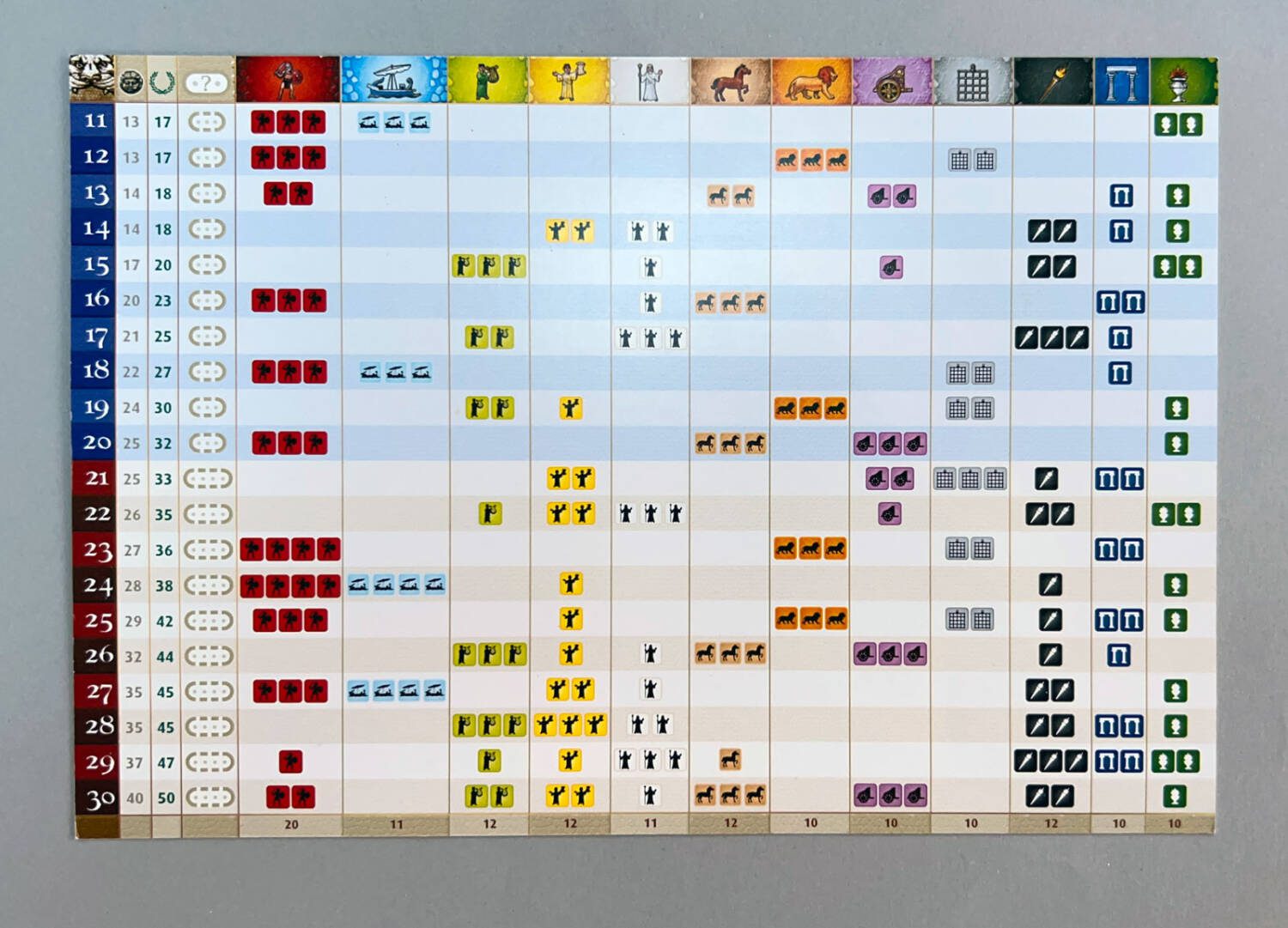
In the far left columns there are: the in-game number assigned to each Event; the cost to claim the Event; the largest possible payout for putting on the Event with all the required elements; the colosseum size required to put on each Event. It’s such a clear way to present so much information and helps you to know which Performance elements you’ll need to acquire—if possible.
The original 2007 edition is very hard to come by. However, if you’re interested in playing, as of this writing, there’s a new deluxified version of Colosseum being crowdsourced on GameFound. I can only hope they’ve kept the best parts of the original game intact.


